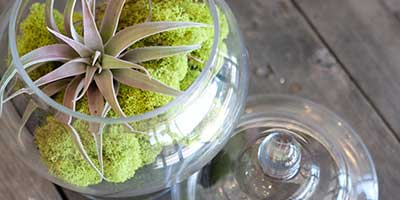“Live simple, love well, and take time to smell the flowers along the way.” Mark Twain was definitely thinking right when he wrote this. And, his advice is so true. Well, almost true. We here at KaBloom definitely think you should take time to smell the flowers, but while most flowers you find in arrangements have a great smell, there are many that have a horrible smell. Don’t think this is true? Well, it is unfortunately, but the reason behind such a wide range of scents is very interesting!
All flowers have a scent, and sometimes even have multiple. Maybe it’s not a scent you like, or maybe you don’t really notice it, but it’s there. There are a few reasons that flowers have scents, but the most important one is reproduction. Each unique scent attracts specific pollinators so they can keep reproducing. While a scent might not be nice to the human nose, it is attractive to whatever insect or animal helping it reproduce. The insect reaches the flower and often has to dig for whatever it wants, which guarantees that the plant’s pollen will rub off on the insect, who takes it away to keep the species alive. Some plants even evolved to look like their pollinators. Certain orchids evolved to look like female bees so the male bees will mistake them, try to mate with them, and then carry their pollen elsewhere. Now that’s pretty tricky!
If a flower has a strong scent, whether good or bad, it means that it’s ready for pollination. Over time, these plants have adapted to appeal only to the creatures beneficial to them. Birds, bees, and butterflies often pollinate sweeter-smelling flowers, while moths and beetles pollinate harsher-smelling flowers. The scents also appear at different times of day. A scent stronger during the day usually is sweeter while scents stronger at night come from harsher plants. Scents are more powerful to these insects than visuals because they can sense scents from farther away.
Warmer temperatures and more sunlight will often bring stronger scents. Humidity can also affect the scent’s power, for when the air is more humid, the fragrance can travel better. Some plants even produce stronger fragrances when humidity is high. But, flowers that constantly produce stronger fragrances often have shorter lifespans because more energy goes into the scent production.
The flowers sometimes use their scents to their own advantage for survival. Plants will often give off a vile smell, especially if damaged, as a way to protect itself from predators. They can even produce a toxin that makes the predator sick, which means they’ll never come for that flower again! And everyone knows about plants that eat insects, like the Venus flytrap. Some of these carnivorous flowers use their scent to attract their prey, then trap them for energy!
When you smell a flower’s fragrant scent, now you’ll know how that smell helps it survive in nature! We promise that we’ll only use sweet-smelling flowers in our arrangements, but it’ll be hard to think of the scent as just part of the flower’s appearance now. Make sure you stop and smell the flowers, but if it doesn’t smell too good, it probably just doesn’t want you bothering it right now! Check back soon for more updates!














